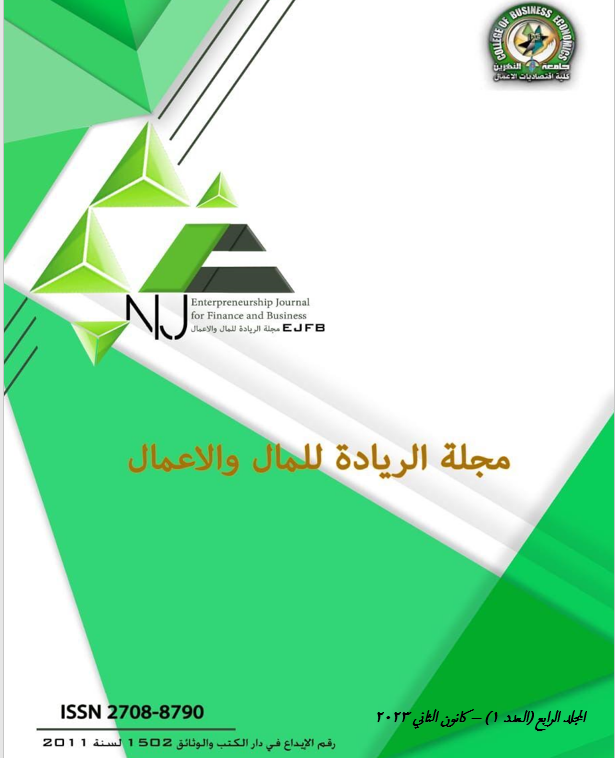Analysis of the relationship of liquidity and credit risks with banking safety indicators in Iraqi private commercial banks for the period(2010-2020)
DOI:
https://doi.org/10.56967/ejfb2023216Keywords:
liquidity risk, credit risk, banking safetyAbstract
Abstract
Commercial banks are the basic infrastructure in building the economy and business of any country, as commercial banks play a prominent role in the process of economic development, and most banks are exposed to many banking risks that may lead to instability in the financial system. Perhaps the most important of these risks is liquidity and credit risk, which are one of the important issues in commercial banks, as it is a source of concern for every bank, because the function for which the banks were found is to provide cash liquidity and grant credit. This research aims to clarify and analyze the relationship of (liquidity and credit) risks with banking safety indicators for a sample of commercial banks. Three commercial banks (the Commercial Bank of Iraq, the United Bank for Investment, and the Middle East Bank) were selected for the period (2010-2020) and the research was based on the following hypothesis It (there is a statistically significant correlation between credit and liquidity risks and banking safety indicators), and the research reached several results, the most important of which is that analyzing the relationship of liquidity and credit risk indicators with banking safety indicators helped policy makers and regulators identify strengths and weaknesses in commercial banks. easily, so that they can take preventive measures to avoid any crises or setbacks that hinder the work of banks. While the research recommended the necessity of urging Iraqi commercial banks to develop measurement and control tools and to develop effective contingency plans, in order to control liquidity and credit risks
Downloads

Downloads
Published
How to Cite
Issue
Section
License
Copyright (c) 2023 حنان جمعه حنظل، وحيدة جبر خلف

This work is licensed under a Creative Commons Attribution 4.0 International License.
This is an Open Access article distributed under the terms of the creative commons attribution (CC BY) 4.0 international license which permits unrestricted use, distribution, and reproduction in any medium or format, and to alter, transform, or build upon the material, including for commercial use, providing the original author is credited.





